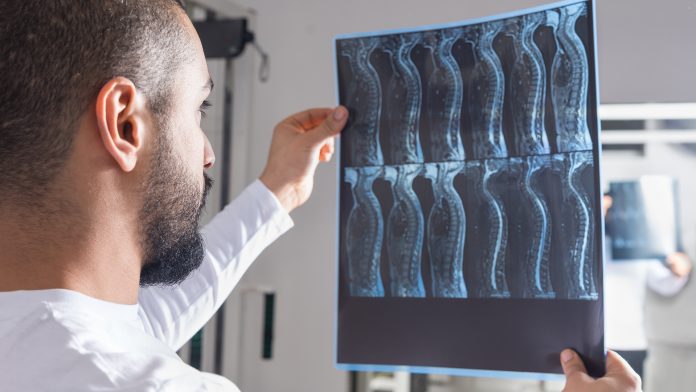Scientists at the NeuroRestore Centre in Switzerland have developed a gene therapy that was proven to stimulate nerve regrowth across complete spinal cord injuries in mice.
A complete spinal cord injury leads to irreversible paralysis. To combat this, the scientists’ gene therapy guides nerves to reconnect to their natural targets below the injuries in order to restore motor function.
The study, ‘Recovery of walking after paralysis by regeneration characterised neurons to their natural target region,’ is published in the journal Science.
Strategies to restore motor function in complete spinal cord injuries have remained elusive
When the spinal cords of mice or humans are partially damaged, the initial paralysis is followed by the recovery of motor function.
After a complete spinal cord injury, however, this natural repair of the spinal cord doesn’t occur and there is no recovery.
Meaningful recovery after severe injuries needs strategies that promote the regeneration of nerve fibres. The requisite conditions for these strategies to successfully restore motor function have remained elusive, however.
“Five years ago, we demonstrated that nerve fibres can be regenerated across anatomically complete spinal cord injuries,” stated Mark Anderson, a senior author of the study, and director of Central Nervous System Regeneration at NeuroRestore.
“But we also realised this wasn’t enough to restore motor function, as the new fibres failed to connect to the right places on the other side of the lesion.”
Which type of neuron is involved in natural spinal-cord repair?
The team worked with peers at UCLA and Harvard Medical School to run analyses and identify which type of neuron is involved in natural spinal cord repair after a partial spinal cord injury.
“Our observations using single-cell nuclear RNA sequencing not only exposed the specific axons that must regenerate, but also revealed that these axons must reconnect to their natural targets to restore motor function,” said Jordan Squair, the study’s first author.
A gene therapy inspired by nature
The scientists’ discovery informed the design of a multipronged gene therapy.
They activated growth programmes in the identified neurons in mice to regenerate their nerve fibres, upregulated specific proteins to support the neurons’ growth through the lesion core, and administered guidance molecules to attract the regenerating nerve fibres to their natural targets below the injury.
“We were inspired by nature when we designed a therapeutic strategy that replicates the spinal cord repair mechanisms occurring spontaneously after partial injuries,” said Squair.
A complete solution for treating spinal cord injury will require two approaches
The team saw that mice with anatomically complete spinal cord injuries regained the ability to walk. They exhibited gait patterns that resembled those quantified in mice that resumed walking naturally after partial injuries.
The observation revealed a previously unknown condition for regenerative therapies to be successful in restoring motor function after neurotrauma.
“We expect that our gene therapy will act synergistically with our other procedures involving electrical stimulation of the spinal cord,” said Grégoire Courtine, a senior author of the study and head of NeuroRestore with Jocelyne Bloch.
“We believe a complete solution for treating spinal cord injury will require both approaches – gene therapy to regrow relevant nerve fibres, and spinal stimulation to maximise the ability of both these fibres and the spinal cord below the injury to produce movement.”
Future uses of the work
Although many obstacles must still be overcome before the gene therapy can be used in humans, the work will act as the first steps towards developing new technology.
In the future, the technology has the potential to be used to restore motor function across humans with complete spinal cord injuries.









